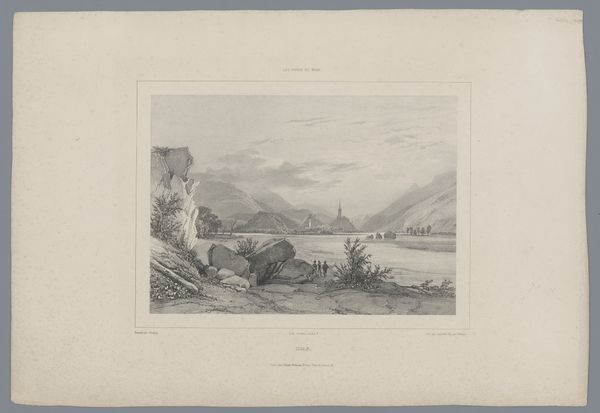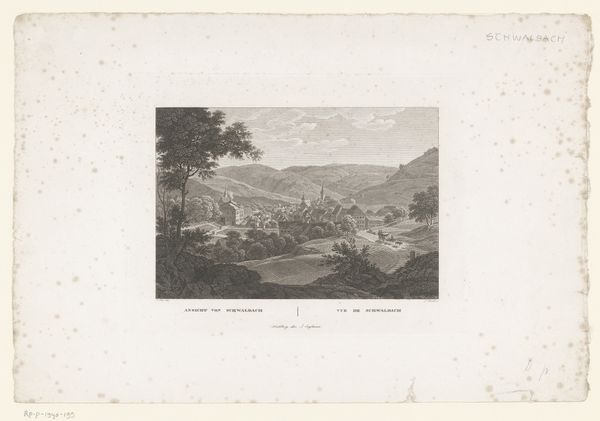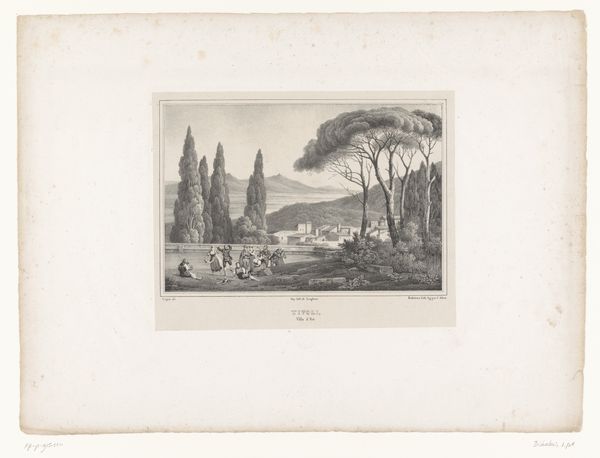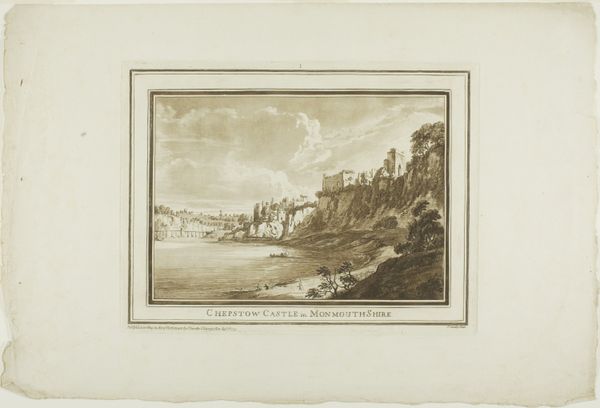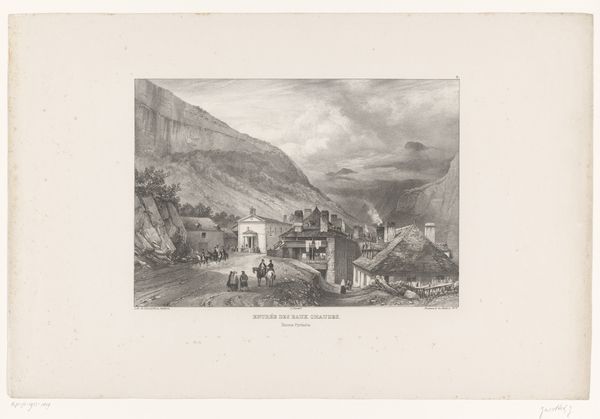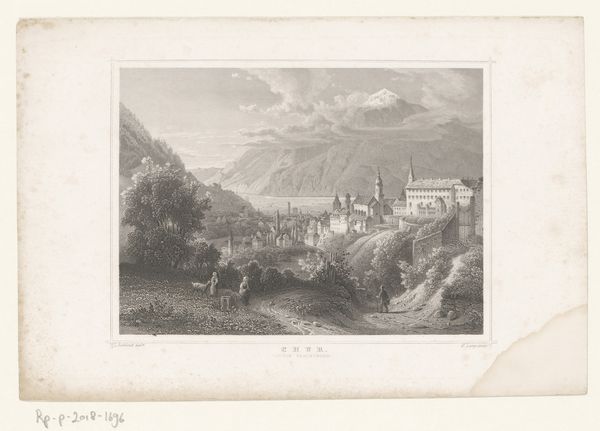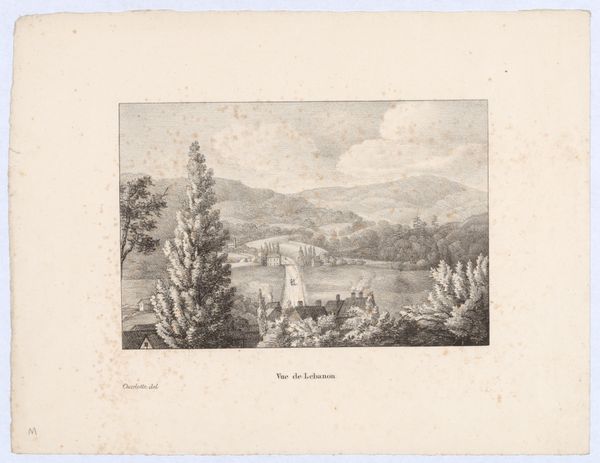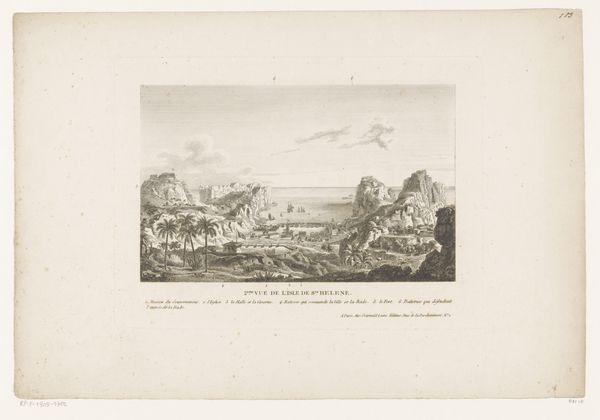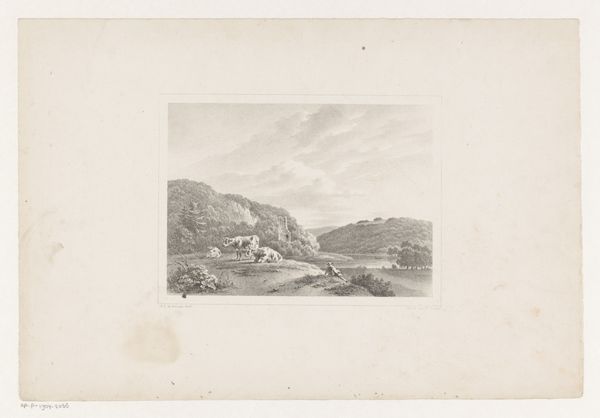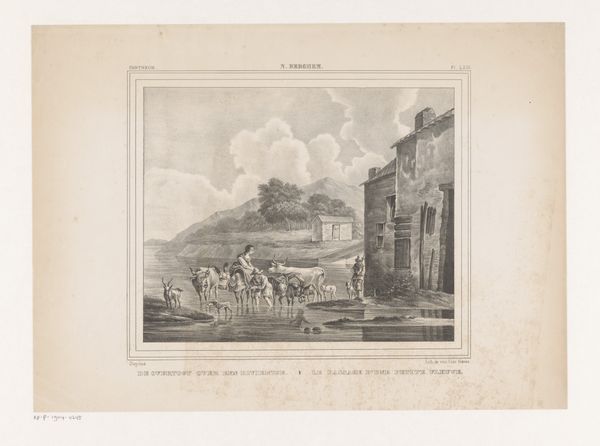
print, engraving
# print
#
landscape
#
romanticism
#
cityscape
#
engraving
Dimensions: height 200 mm, width 263 mm
Copyright: Rijks Museum: Open Domain
Curator: This engraving, dating from around 1800 to 1834, presents Ludwig Friedrich Schnell’s vision of “Gezicht op Bingen am Rhein," or "View of Bingen on the Rhine," housed here at the Rijksmuseum. It certainly offers an interesting, idyllic version of the locale. Editor: My initial impression is one of meticulously crafted tranquility, though it almost feels like a stage set. Look at how everything seems positioned just so, and so precisely. The way the mountains embrace the river feels deliberately picturesque. What’s the method here, exactly? Curator: This image comes to us through printmaking, specifically an engraving. The detail Schnell achieved with these delicate lines is really remarkable, wouldn't you say? Note how the layers of the landscape and sky are articulated. The figures feel smaller when framed against this larger nature, right? Editor: Absolutely. And to achieve this tonality purely through linear marks… the labor! The repetitive, physical process contrasts beautifully with the serene image created. This wasn't just artistic inspiration; this was artisanal skill applied over and over to construct that atmosphere. It’s practically meditative for the artist. Do we know about Schnell's production process? Curator: I believe it fits squarely within the Romanticism style of the era; they really seemed to find the sublimity of nature there. Notice the steeple puncturing the sky as this religious and temporal anchor. Editor: But what kind of audience would have consumed this print? Was it meant for mass consumption? What was the relationship between printmaking, and this idea of disseminating Romantic notions to the emerging middle class through landscape? Curator: Excellent questions! As for the city itself, Bingen became very important strategically over the years, especially during the French Revolution. Could this tranquil, safe vision of the city speak to fears? Or even perhaps an effort at self-preservation? Editor: So this image is more complex and entangled than a surface view might let on... Curator: Right, the choice to focus on certain landmarks rather than, say, revolutionary fortifications becomes pretty telling when you consider these circumstances. Makes you see things with new eyes, huh? Editor: Indeed. Shifting the view ever so slightly reminds us there's a wealth of considerations sitting beneath every image we make and see. Thanks!
Comments
No comments
Be the first to comment and join the conversation on the ultimate creative platform.

